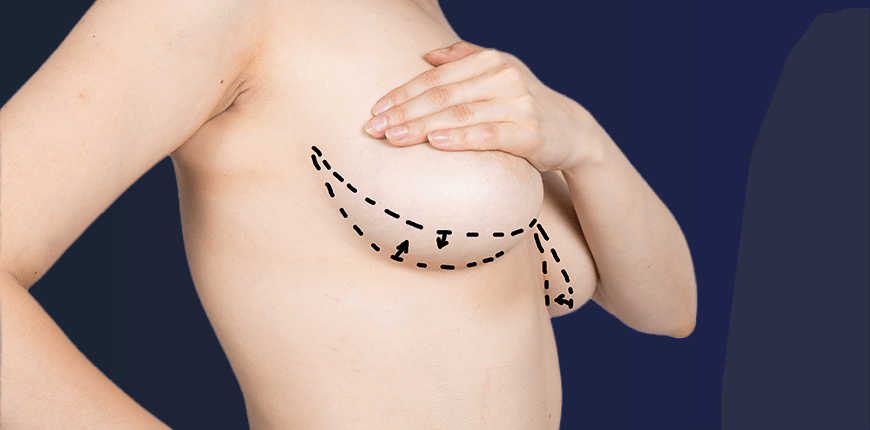
Six-Pack Surgery
Six-pack plastic surgery, also known as abdominal etching or six-pack liposculpture, is a cosmetic procedure that is designed to create the appearance of defined abdominal muscles. This procedure involves removing small pockets of fat from the abdomen to create a more sculpted and toned appearance.
What is Six-Pack Surgery?
Six-pack surgery, also known as abdominal etching or abdominal sculpting, is a cosmetic surgery procedure designed to enhance the appearance of the abdominal muscles. The procedure involves removing excess fat and skin from the abdominal area and then using liposuction to selectively contour the remaining fat to create the appearance of a six-pack.
Six-pack surgery is typically performed on men who have low body fat but are unable to achieve the desired abdominal definition through diet and exercise alone. The procedure is not a substitute for a healthy lifestyle and should not be used as a weight loss solution.
As with any surgical procedure, tummy tuck surgery is associated with various risks such as bleeding, infection, scarring, and anesthetic complications. Therefore, patients should carefully weigh the risks and benefits of the procedure and discuss all options with a qualified plastic surgeon.
Who Can Be a Good Candidate for Six-Pack Surgery?
Men who are in good general health, have a low-fat percentage, and have well-developed abdominal muscles that are not visible due to the stubborn fat layer may be good candidates for six-pack cosmetic surgery. The ideal candidate for the procedure should have realistic expectations for the results of the procedure and be committed to maintaining a healthy lifestyle to maintain an aesthetic appearance. In addition, candidates should have good skin elasticity and not have any health problems that may increase the risk of complications during or after surgery.
This surgery is not suitable for people with serious health problems such as fatty liver, gallbladder problems, kidney disease, diabetes, high blood pressure, heart disease, respiratory problems, or women who are pregnant or breastfeeding. In addition, individuals who are significantly overweight or have a high body mass index (BMI) cannot be candidates for six-pack surgery.
Before the operation, the surgeon evaluates the general health status of the patient through various examinations and tests and reconcludeshether the patient is suitable for six-pack aesthetic surgery.
How is Six-Pack Surgery Performed?
 Six-pack surgery is performed under general anesthesia and takes about one to two hours to complete. The specific technique used may vary depending on the individual's anatomy and desired outcome.
Six-pack surgery is performed under general anesthesia and takes about one to two hours to complete. The specific technique used may vary depending on the individual's anatomy and desired outcome.
- Marking The Abdominal Muscles: The surgeon will use a surgical marker to outline the patient's existing abdominal muscles and identify the areas of excess fat that need to be removed.
- Making Incisions: The surgeon will make small incisions in the natural creases of the abdomen, typically in the belly button or along the lower abdomen.
- Liposuction: The surgeon will use a thin tube called a cannula to suction out excess fat from the targeted areas, selectively contouring the remaining fat to create the appearance of well-defined abdominal muscles.
- Closing The Incisions: Once the desired contour has been achieved, the surgeon will close the incisions with sutures and cover the area with a sterile dressing.
After the procedure, patients will typically need to wear a compression garment to help reduce swelling and support the healing process. Most patients can return to normal activities within a few days to a week after the procedure, but strenuous exercise and heavy lifting should be avoided for several weeks.
How is Six-Pack Surgery Recovery Process?
The recovery process after six-pack surgery involves some discomfort and swelling, but most patients can resume their normal activities within a week or two of the procedure.
- Compression Garments: Patients are usually instructed to wear a compression garment over the treated area for several weeks after the procedure. The garment helps to minimize swelling and support the healing process.
- Pain Management: Patients may experience some pain or discomfort in the treated area after the procedure. The surgeon may prescribe pain medication or recommend over-the-counter pain relievers to help manage this discomfort.
- Limiting Physical Activity: Patients should avoid strenuous exercise or heavy lifting for at least two to four weeks after the procedure to allow the treated area to heal properly. Light activity, such as walking, is encouraged to promote circulation and reduce the risk of blood clots.
- Follow-up Appointments: Patients will need to attend follow-up appointments with the surgeon to monitor their progress and ensure that the healing process is proceeding as expected.
- Resuming Normal Activities: Most patients can return to work or school within a few days of the procedure, but it may take several weeks before they can resume more strenuous physical activities.
It's important to note that the recovery process can vary depending on the individual and the specific technique used during the procedure. Patients should follow their surgeon's instructions carefully and contact them if they have any concerns or questions during the recovery process.
-
How much recovery time is needed after six-pack surgery?
Most patients can resume their normal activities within a week or two of the procedure. However, the full recovery time can vary from person to person. After the procedure, patients typically wear a compression garment for a few weeks and avoid strenuous exercise for several weeks.
-
What are the risks of Six-pack Surgery?
As with any surgical procedure, there are risks involved, such as infection, bleeding, and adverse reactions to anesthesia. There may also be some scarring, and the results of the procedure may not be as expected. It's important to discuss the risks and benefits of the procedure with a qualified surgeon before making a decision.
-
What are the benefits of Six-pack Surgery?
The primary benefit of six-pack surgery is the enhanced appearance of the abdominal muscles. The procedure can provide a more defined and sculpted look to the midsection, creating the appearance of a six-pack. Having a well-defined and toned abdomen can boost self-confidence and body image. Once the excess fat is removed and the muscles are contoured, the results of the procedure are typically permanent as long as the patient maintains a healthy lifestyle.














